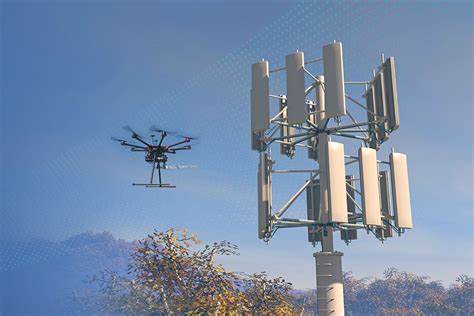Unraveling the Wavelengths: A Dive into the World of Antennas
Antennas are the unsung heroes of the wireless world, quietly facilitating communication through the airwaves. These unassuming devices play a crucial role in our connected lives, enabling everything from Wi-Fi and radio to satellite communication. In this blog, we’ll explore the fascinating world of antennas, focusing on three types that stand out in their own unique ways.
Dipole Antennas: The Basics
Let’s start with the basics – dipole antennas. Picture a simple, straight rod divided into two equal parts, each connected to a transmission line. These antennas are like the bread and butter of the wireless world, used in countless applications due to their simplicity and effectiveness.


Dipole antennas operate on the fundamental principle of resonance, where the length of the antenna is carefully designed to match the wavelength of the signal it’s intended to receive or transmit. They are like the “everyday heroes” of the antenna world, reliable and versatile.
Yagi-Uda Antennas: The Directional Dynamo
When it comes to focusing signals in a specific direction, Yagi-Uda antennas take the spotlight. Named after their inventors, Shintaro Uda and Hidetsugu Yagi, these antennas are commonly seen on rooftops for TV reception.
A Yagi-Uda antenna consists of a driven element (the main antenna), one or more director elements (to focus the signal), and a reflector element (to enhance the antenna’s directionality). This design allows for a more targeted approach in sending or receiving signals, making Yagi-Uda antennas the go-to choice for many long-range communication scenarios.

Parabolic Reflectors: Harnessing the Power of Curves
Ever marveled at the colossal satellite dishes turning towards the sky? Those are parabolic reflectors at work. These antennas use a curved surface, often in the shape of a dish, to collect or radiate signals. The curved design helps to focus the signals onto a single point, enhancing the antenna’s efficiency.
Parabolic reflectors are commonly used in satellite communication, radio telescopes, and even in some Wi-Fi setups. The larger the dish, the higher the gain, allowing for communication over longer distances.
Conclusion: Connecting the Dots
Antennas may not always grab the spotlight, but their role in our connected world is undeniable. From the simplicity of dipole antennas to the directional prowess of Yagi-Uda antennas and the efficiency of parabolic reflectors, each type plays a vital part in keeping us connected.
The next time you catch a glimpse of an antenna on a rooftop or a satellite dish pointing towards the stars, take a moment to appreciate the invisible web of signals that keep us connected, all thanks to these incredible devices.

